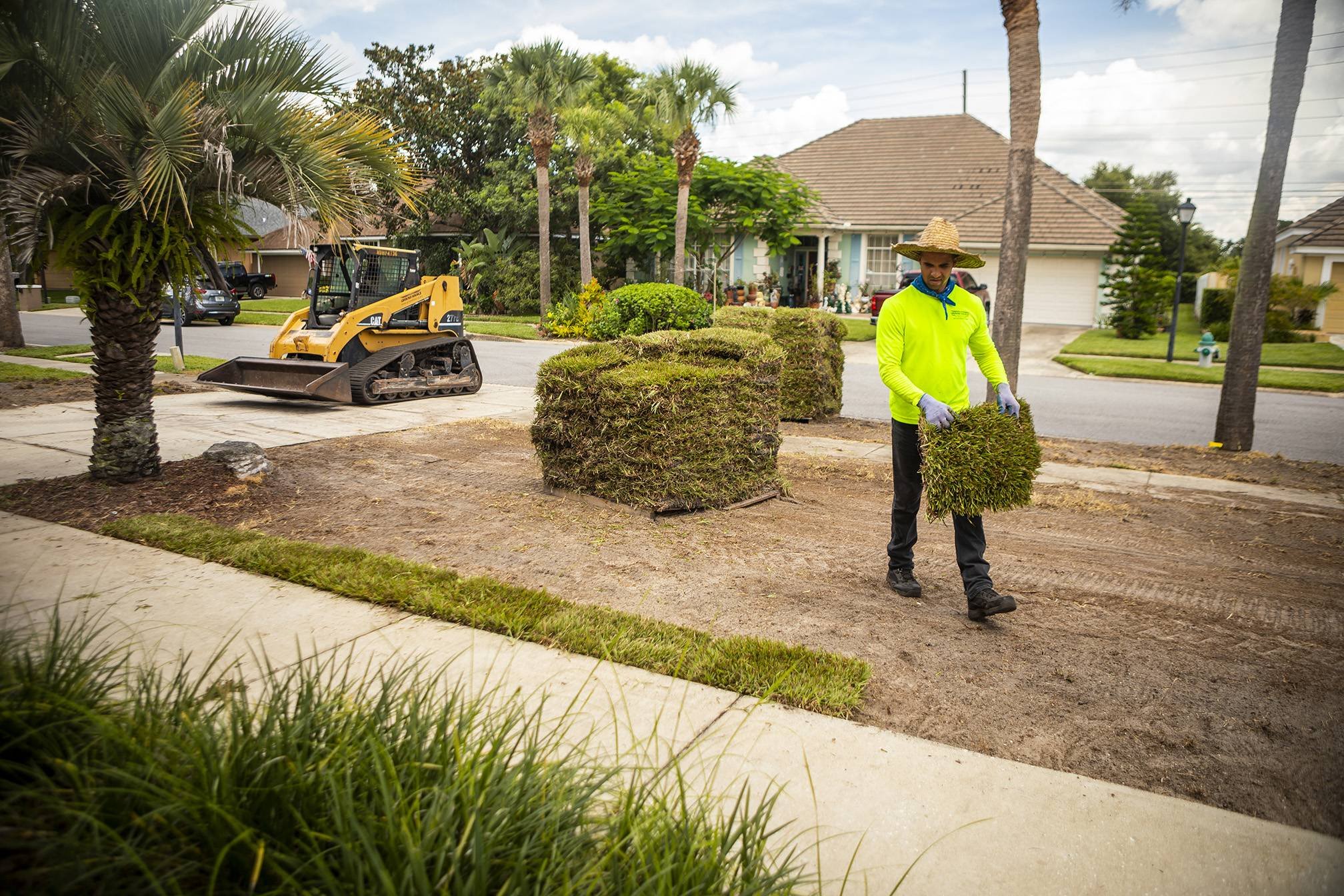Whether you are thinking about installing sod on your lawn or you are thinking about having it installed by a professional, you should know a few benefits of installing sod. One of the benefits of installing sod is the immediate cover that it provides your lawn, and another is the fact that it is an excellent filter for dirt and dust that can come from your home.
Sod prevents soil erosion
Using sod in your lawn is an excellent way to keep erosion at bay. You can also improve the fertility of your soil, which will result in more productive plant life.
When it comes to soil erosion, there are many plant types to choose from. These include shrubs, which provide extensive root systems. Also, a few tree species can work as erosion control plants.
The first thing you should do is determine which plant will be best for your site. You will need to consider factors like climate, sunlight, incline, soil quality, and moisture.
The best sod to use for your yard is the one that will withstand heavy rains. The leaves of turfgrass rhizomes, for example, slow down water flow. The rhizomes also physically protect bare soil, making it a good erosion preventer.
It is also a good idea to use plants with complex root systems. This will make the soil stay in place longer. The best plants to use for this are those that grow in the shade, such as fescue.
Sod provides immediate cover of exposed soil
Whether you are creating a new lawn or trying to repair a damaged area, sod is an excellent choice. It provides an instant cover of exposed soil in your lawn while reducing mud, weeds, and erosion. It also improves air quality.
The key to sod installation is proper preparation. This is particularly important when installing sod on a slope. In particular, sod on slopes of 3:1 or greater should be tamped and secured with sod staples.
The first step is to properly measure the area you want to sod. This can be done using a tape measure or a paper measure. You can also use a rototiller, which will create a more even surface.
The surface of the soil should be cleared of debris, stones, and large roots. It should also be evenly irrigated. In addition, a two-inch layer of compost should be mixed into the soil. The compost will provide additional nutrients to the soil.
Sod is a quick and excellent filter of dirt and dust from your home
Getting your hands on some sod is a great way to get rid of the dust and dirt that has been in your house for far too long. However, the best time to do the un-mobbed dusting is in the late spring and early summer months when the weather is still warm and the bugs are at bay. Besides, it’s an inexpensive way to ensure a healthy home for years to come. Luckily, sod is readily available at your local home improvement store, garden center, or turf aficionado. And don’t worry, if the grass starts to grow too tall, it can be easily transplanted. Using sod is also a low-cost, high-return option for homeowners interested in putting their own spin on their front yards. And of course, the best part is the fact that you can enjoy your new yard without the stress of having to haul out a lawn mower and mow it down yourself.
Cost of sod vs grass seed
Whether you are growing your lawn on your own or hiring a professional landscaper, one of the most important decisions you will make is whether to use sod or grass seed. Both options have their pros and cons, so it’s important to understand the differences before deciding which one to use.
Sod costs more than seed, but it can be a good option for some types of lawns. The cost of sod varies by the type of grass you want and the climate you live in. Some types of sod can cost up to $0.28 per square foot.
Seed costs a little less, but it will take longer to establish. This means that you won’t be able to use it right away. Depending on the type of grass you are planting, a seed may take a year to grow into a usable lawn. The cost of seed is less than a cent per square foot, so it’s a good choice for anyone who doesn’t want to break the bank.


